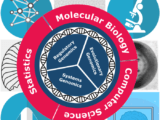
Top Tools for Personalized Medicine Analysis
February 22, 2025Introduction
The field of personalized medicine is transforming healthcare by tailoring treatments based on individual genetic profiles. A variety of bioinformatics tools play a critical role in analyzing genetic variations, predicting disease susceptibility, and guiding customized therapeutic interventions. From variant calling to data visualization, each tool contributes to the precision and efficiency of genomic data analysis. Understanding the capabilities and applications of these tools can significantly enhance research and clinical decision-making in personalized medicine.
Next-Generation Sequencing Platforms
Next-generation sequencing (NGS) platforms have revolutionized genomic analysis by enabling rapid, high-throughput sequencing. These platforms differ in terms of sequencing depth, accuracy, and cost-effectiveness.
- Illumina HiSeq & NovaSeq: Known for their high accuracy and scalability, these platforms are ideal for large-scale genomic studies but come with higher operational costs.
- Thermo Fisher Ion Torrent: Provides a cost-effective alternative with a faster turnaround time, making it suitable for targeted sequencing applications.
- Oxford Nanopore MinION: Offers long-read sequencing capabilities, excelling in detecting structural variations and mapping complex genomic regions.
High sequencing depth allows for the reliable identification of rare variants, which is essential for developing personalized treatment plans. While Illumina dominates the market due to its superior accuracy, emerging technologies like Nanopore sequencing are gaining traction for specific applications.
Bioinformatics Pipelines
The vast amount of data generated by NGS platforms necessitates automated bioinformatics pipelines for efficient processing and analysis. These pipelines streamline data workflows, reduce human error, and ensure reproducibility.
- Workflow Automation: Tools like Nextflow and Snakemake enable the sequential execution of computational steps, from quality control to variant calling, without manual intervention.
- Data Integration: Combining genomics, transcriptomics, and proteomics data enhances the interpretation of biological processes. Platforms like Galaxy facilitate seamless data integration and visualization.
By leveraging automated pipelines, researchers can accelerate genomic analysis, ensuring high-quality data interpretation for personalized healthcare.
Variant Calling Tools
Variant calling tools identify genetic variations such as single nucleotide polymorphisms (SNPs) and insertions/deletions (indels), crucial for mutation detection in personalized medicine.
| Tool | Key Features | Best Use Cases |
|---|---|---|
| GATK | Advanced algorithms, high accuracy | Large-scale genomic studies, cancer genomics |
| SAMtools | Lightweight, fast processing | Routine sequencing projects |
| FreeBayes | Haplotype-based variant detection | Population genetics, mixed samples |
Selecting the right variant calling tool ensures high precision in mutation detection, ultimately guiding personalized treatment decisions.
Functional Annotation Software
Functional annotation software helps interpret genetic variants by linking them to biological pathways and clinical implications.
- Gene Ontology (GO) Mapping: Categorizes genes based on biological processes, molecular functions, and cellular components.
- Pathway Enrichment Analysis: Tools like DAVID, GSEA, and Enrichr identify over-represented pathways in genetic datasets.
- Integrated Data Sources: ANNOVAR and VEP compile data from multiple sources, including protein-protein interaction networks and gene expression databases.
These tools enhance our understanding of genetic mutations, supporting the development of targeted therapies.
Data Visualization Solutions
Effective data visualization is crucial for interpreting complex genetic data and identifying patterns that inform personalized treatment strategies.
- Heat Maps: Used to display gene expression variations in a color-coded format.
- Scatter & Volcano Plots: Highlight significant gene expression changes.
- Interactive Dashboards: Platforms like Tableau and Plotly Dash allow for real-time data exploration and collaboration.
Advanced visualization techniques simplify data interpretation, fostering improved clinical decision-making and research communication.
Frequently Asked Questions
1. How does personalized medicine differ from traditional approaches?
Personalized medicine tailors treatments based on genetic profiling, unlike conventional one-size-fits-all methods. This approach enhances treatment efficacy and reduces adverse effects.
2. What ethical considerations are involved in personalized medicine?
Ethical concerns include genetic discrimination and informed consent. Ensuring transparency and patient rights protection is essential when handling genetic data.
3. How is patient data privacy protected in personalized medicine?
Data encryption and strict consent protocols safeguard patient information, ensuring that genetic data is only accessed by authorized personnel.
4. What are the costs associated with personalized medicine analysis?
Costs vary depending on the type of genetic testing and insurance coverage. Expenses include laboratory fees, consultations, and ongoing monitoring.
5. How does personalized medicine improve treatment efficacy?
By identifying genetic predispositions and tailoring interventions, personalized medicine enhances therapeutic outcomes and minimizes trial-and-error treatments.
Conclusion
The integration of advanced bioinformatics tools and data analysis techniques is reshaping personalized medicine. From next-generation sequencing platforms to functional annotation and visualization tools, these technologies provide essential insights into genetic variations. Understanding and leveraging these tools can revolutionize healthcare, making treatments more precise and effective. As technology advances, the future of personalized medicine holds immense potential for improving patient outcomes through targeted therapies















